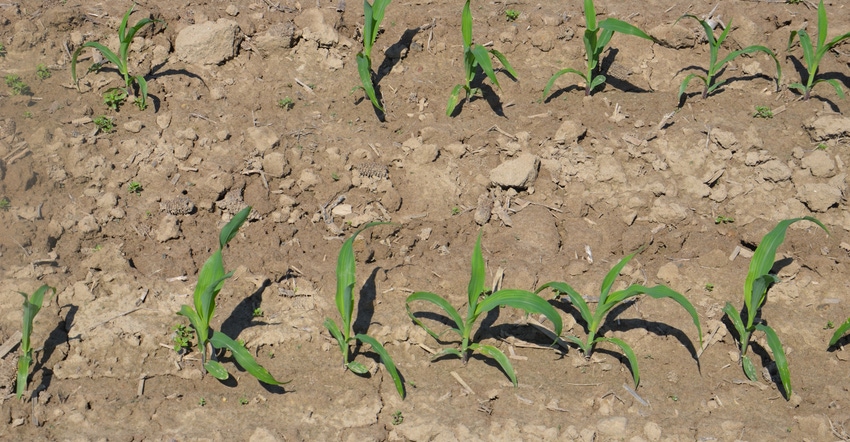
Dennis Bowman has worked with farmers and pesticides for more than 30 years. Once a county Extension educator, Bowman is now an area specialist with the University of Illinois. “I’m going to offer some advice about using herbicides from an old Extension agent,” Bowman told a crowd of farmers recently. “I taught pesticide safety training for many years.”
His first piece of advice was to read each label. “In 1981 when we put on programs, 80% of the acres received atrazine for corn, and Treflan and Sencor for soybeans,” he recalled. “There were only a few labels to keep track of then.
“Today there’s a whole list of herbicides, active ingredients and premixes. Reading labels is a must. To stay within the label for the newest products, you must read the online label.”
How do you know which products to use? Start with what worked last year, and discuss it with your retail dealer, Bowman said. It gets down to what products fit best on your farm. Your dealer may recommend a program, but you may want to “trust and verify” recommendations.
Check crop tolerances to various products, Bowman said. Crop tolerance is rated from 0 to 3, with 0 being excellent and 3 being poor tolerance. Atrazine preemergence rates at 0 for corn, and atrazine postemergence scores at 1.
“There are several 2 ratings, but no 3’s in corn,” Bowman said. “Find this information in the 2018 Ohio, Indiana and Illinois Weed Control Guide.�”
Obtain the guide at estore.osu-extension.org or by calling 614-292-1607. Weed control specialists in Ohio, Indiana and Illinois prepared the guide.
Useful tables
Information on many things besides crop tolerance is also in the guide, Bowman said. Some examples:
• Weed response. Several tables show ratings for both grasses and broadleaf weeds. The guide uses a 6 to 9 rating system, where 9 equals 90% to 100% control and 6 equals 60% to 70% control. Less than 60% isn’t recommended. For example, atrazine rates as an 8 or 9 for control of all broadleaf weeds in the table for preplant and postemergence applications in corn except burcucumber, which rates as a 6. Atrazine also isn’t recommended for lambsquarters.
• Rainfast intervals for postemergence applications. The amount of time that must pass before rain will affect the application is listed in hours in one table. For example, atrazine is rainfast after two hours, while Laudis is rainfast after one hour. Status requires four hours.
• Spray additives allowed. The same table indicates which spray additives can be used. If applying Laudis plus atrazine on postemergent corn, use crop oil concentrate plus liquid nitrogen or AMS.
• Height restrictions. Examples of height restrictions include applying Laudis broadcast up to V8 in corn, and applying Laudis plus atrazine broadcast only up to 12-inch corn.
• Herbicide and insecticide use precautions. Several herbicides can’t be used or aren’t recommended if applying Counter insecticide, for example. All herbicides listed can be applied if Capture is used. Only those herbicides with interaction issues are listed.
• Herbicide premixes. Find information on active ingredients in premixes. For example, not sure what makes up FulTime 4L? It’s acetochlor and atrazine. Three quarts of product equals 1.8 pounds of acetochlor and 1.2 pounds of atrazine.
About the Author(s)
You May Also Like




